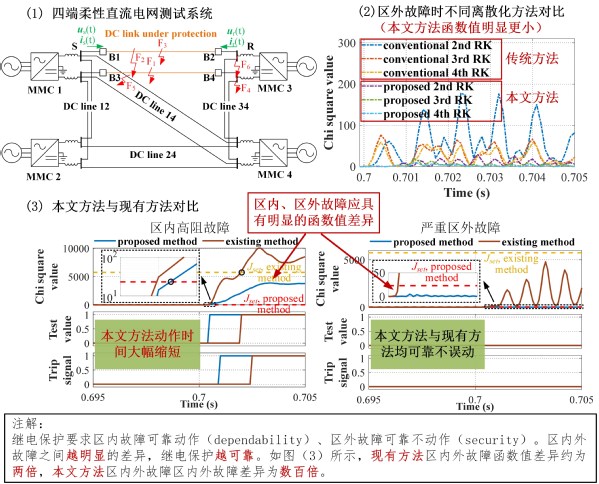Recently, Assistant Professor Liu Yu’s research group, the Center for Intelligent Power and Energy Systems (CiPES) in SIST, proposed a new dynamic-state-estimation (DSE) based protection (DSEBP) method for transmission lines in MMC-HVDC grids. The work has been published in an article in the IEEE Transactions on Power Delivery, the leading peer-reviewed journal in the field of power system protection. The article is entitled “Improved Dynamic State Estimation Based Protection on Transmission Lines in MMC-HVDC Grids”.
Large-scale renewable energy will be integrated into the power system of China to achieve the “carbon peak” and “carbon neutrality” goals. The multi-terminal high voltage direct current grid based on modular multi-level converters (MMC-HVDC grid) is one of the promising schemes to solve the problem of renewable energy integration. MMC-HVDC grid is proposed for ultra-long distance, ultra-large capacity, and point-to-point transmission of the power. Due to the low inertia and damping of the system, line faults in MMC-HVDC grids will usually result in a sudden increase in line currents, causing permanent damage to power electronic devices, thus raising challenges to the protection of MMC-HVDC grid lines.
Traditional DSE applications in power systems usually focus on electromechanical transients, which assumes that the control variables of the DSE problem are constant and the electric quantities are in sinusoidal steady states. To further improve the operational speed and reliability of the relays of MMC-HVDC grids, in this study, the DSE is extended to the electromagnetic transients of the system with a higher time resolution, to more accurately describe the transient characteristics during line faults in MMC-HVDC grids. The new method constructs an accurate dynamic model of the transmission line and extracts the line mode dynamic model to reduce the impact of frequency dependent parameters. It also proposes an improved Runge-Kutta (RK) discretization method considering the dynamic characteristics of the control variables, which can significantly reduce the discretization error of the dynamic model. In addition, the new method systematically considers the statistical law of the estimation error and calculates the error covariance matrix off-line to ensure the real-time performance of the algorithm.
The experimental results show that the new method can identify and isolate in-zone faults more quickly than the existing DSE based method, while being reliable and non-misbehaving for severe out-of-zone faults. The new method has stronger noise immunity than the existing Bergeron model based differential protection. At the same time, the new method is compatible with the lower 10 kHz sampling frequency of existing devices and meets the real-time requirements of relay protection.
Second year Ph.D. candidate Wang Binglin is the first author, and Prof. Liu Yu is the corresponding author of the paper.
Link to the paper: https://ieeexplore.ieee.org/document/9629249

Comparison between proposed and existing methods




 沪公网安备 31011502006855号
沪公网安备 31011502006855号


